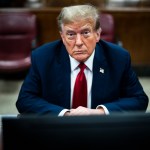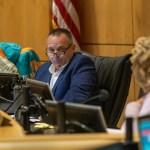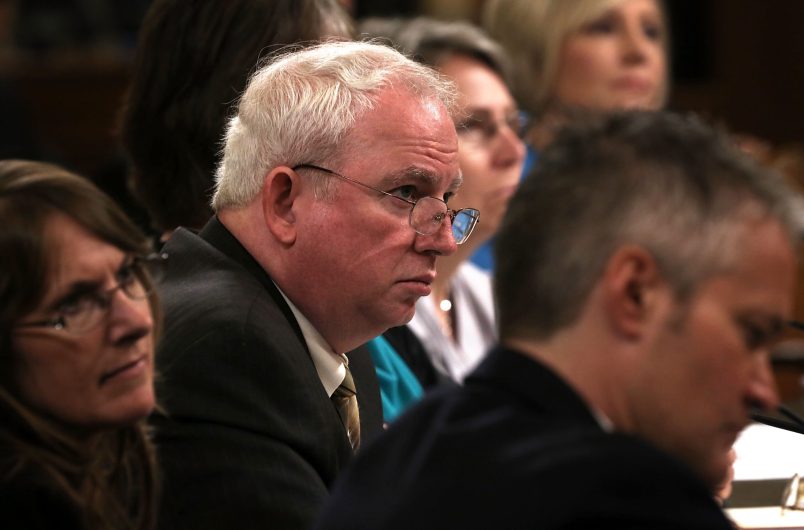Trump attorney John Eastman expected that filing a Big Lie lawsuit seeking to overturn Biden’s win in Georgia might just lead to criminal investigation, new messages show.
The messages, first reported by Politico and revealed via a still-active Dropbox link referenced in a Tuesday night court filing, show what Eastman has furiously been trying to hide: that he appears to have known that information he included in a Georgia federal lawsuit, whose accuracy President Trump swore to, was inaccurate.
Eastman’s apparent decision to file the lawsuit and verification by Trump has been seen as a potentially stunning violation of attorney ethics since portions of the message were first revealed last month by U.S. District Judge David Carter for the Central District of California. But the new messages, made public apparently by accident on Tuesday evening after being provided to the January 6 Committee, make clearer that Eastman and the attorneys around him seem to have understood the complaint’s problems with precision.
Eastman wrote in a December 31, 2020 message sent at 12:15 that Trump’s legal team had an “issue.”
The problem was this: Eastman and Trump wanted to include data in a Georgia federal lawsuit seeking to overturn the election that they had used in an earlier state court-level challenge in Georgia. The data, they had claimed, showed that dead voters, felons, and the unregistered had voted in quantities great enough to nullify Biden’s win.
The issue? It was too good for MAGA world to be true. Eastman wrote that he had since learned that the data was “inaccurate,” but still wanted to find a way to incorporate the conclusion to which it led: that there were enough fraudulent votes to hand Trump the election in Georgia.
“The complaint incorporates by reference the state court challenge. Although the President signed a verification for that back on Dec. 1, he has since been made aware that some of the allegations (and evidence proffered by the experts) has been inaccurate,” Eastman wrote. “For him to sign a new verification with that knowledge (and incorporation by reference) would not be accurate.”
Verifying under oath data that you know to be wrong could constitute perjury and, at a minimum, appears to violate several rules of attorney ethics.
The Trump attorney added in the email: “And I have no doubt that an aggressive DA or US atty someplace will go after both the President and his lawyers once the dust settles on this.”
Eastman has said in court that he disagrees with Carter’s determination that the emails constituted part of a crime, and petitioned the judge to reconsider. That effort failed before Eastman appealed.
The messages themselves became public on Tuesday after a bizarre series of misunderstandings and mishaps.
Judge Carter ordered Eastman to give the messages to the committee when he found that the messages were likely part of a crime, and therefore were not protected from release to the January 6 Committee by attorney-client privilege.
Eastman then handed the messages over to the committee, but asked it not to access them as he appealed Carter’s ruling. The committee soon replied that it was too late: it had already accessed them.
The Ninth Circuit Court of Appeals ordered both sides to explain what was going on. In a Tuesday evening update, the January 6 Committee included a link to the Dropbox folder that Eastman had used to transfer the messages to the committee. Eastman had not deactivated the link at the time of the committee’s filing, leading to their public disclosure.
The messages show how focused Eastman and the other attorneys around him were on the question of filing a federal lawsuit with data that they knew to be innaccurate.
In a separate email sent one minute before the message in which Eastman said that Trump knew data in the lawsuit was innaccurate, Eastman told his co-attorney on the Georgia case Kurt Hilbert that Trump planned to ask White House attorney Eric Herschmann “whether ’tis ok to sign the verification.”
Per an email published by Axios last month, Herschmann wrote that evening that he was “concerned about the President signing a verification about facts that may not be sustainable under detailed scrutiny.”
Eastman appears to have plowed ahead — the lawsuit, along with Trump’s verification — was filed the same day.
The lawsuit, experts told TPM last week, includes odd language that attempts to hold the claims that Eastman apparently understood to be false at arm’s length, while also incorporating them in arguments made for the judge.
It’s an attempt to have it both ways, one that co-counsel Kurt Hilbert referenced in an email.
In one message, Hilbert said that he “took out numbers from the complaint,” and left them in a separate document attached to it.
Hilbert wrote later that he attached a long footnote to the line in the complaint which said that “facts and figures” in the filings had been “presented to Plaintiff through expert affidavits” but also that Trump “has not sworn to any facts under oath that he does not have personal knowledge or believe in.”
The upshot: Trump was only swearing to things he knew personally. The underlying fraudulent data was something he had only heard, indirectly.
“Good footnote,” replied a redacted email address with the signature block of Cleta Mitchell, an influential right-wing attorney who was working for Trump. “We should/could also amend the verified statement to say something similar.”
It appears that that took place: the verification that Trump eventually signed included similar language distancing the President from the information to whose veracity he was swearing, instead noting that he only was liable for information that others told him, of which he did not have direct knowledge.
The rest of the messages disintegrate with the urgency of the moment. January 6 was less than a week away, the final deadline by which Biden would be certified.
Mitchell said that she couldn’t figure out how to have Trump’s signature of the verification notarized, because he was aboard Air Force One.
“So, now what?” she wrote. “Can we figure out a way to file this without a verification?”
William McCathran, a White House aide, eventually verified Trump’s signature, per a copy of the lawsuit. It was filed the same day.
Kenneth Chesebro, the Trump attorney who spoke exclusively about his work for the former President with TPM in June, also pops up in the messages.
Chesebro wrote in a Dec. 31 message that he believed Supreme Court Justice Clarence Thomas would be the most likely to “issue some sort of stay or other circuit justice opinion saying Georgia is in legitimate doubt.”
He added that the justice was likely their “only chance to get a favorable judicial opinion by Jan. 6, which might hold up the Georgia count in Congress.”
Eastman replied: “I think I agree with this.”










